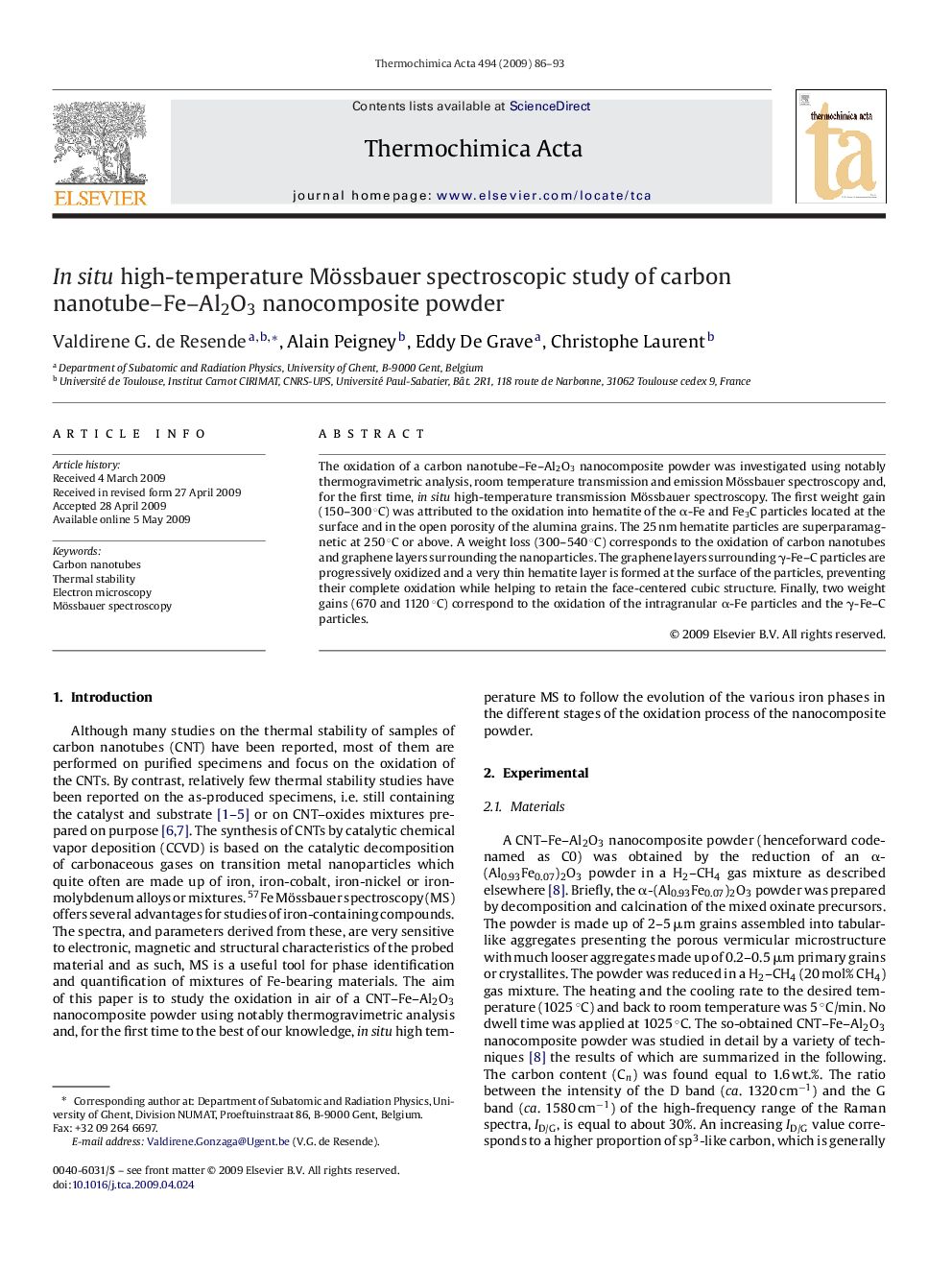| Article ID | Journal | Published Year | Pages | File Type |
|---|---|---|---|---|
| 675057 | Thermochimica Acta | 2009 | 8 Pages |
The oxidation of a carbon nanotube–Fe–Al2O3 nanocomposite powder was investigated using notably thermogravimetric analysis, room temperature transmission and emission Mössbauer spectroscopy and, for the first time, in situ high-temperature transmission Mössbauer spectroscopy. The first weight gain (150–300 °C) was attributed to the oxidation into hematite of the α-Fe and Fe3C particles located at the surface and in the open porosity of the alumina grains. The 25 nm hematite particles are superparamagnetic at 250 °C or above. A weight loss (300–540 °C) corresponds to the oxidation of carbon nanotubes and graphene layers surrounding the nanoparticles. The graphene layers surrounding γ-Fe–C particles are progressively oxidized and a very thin hematite layer is formed at the surface of the particles, preventing their complete oxidation while helping to retain the face-centered cubic structure. Finally, two weight gains (670 and 1120 °C) correspond to the oxidation of the intragranular α-Fe particles and the γ-Fe–C particles.
